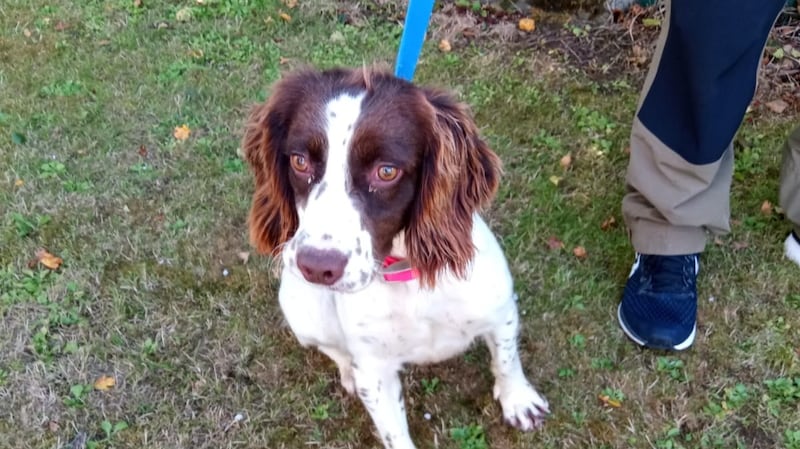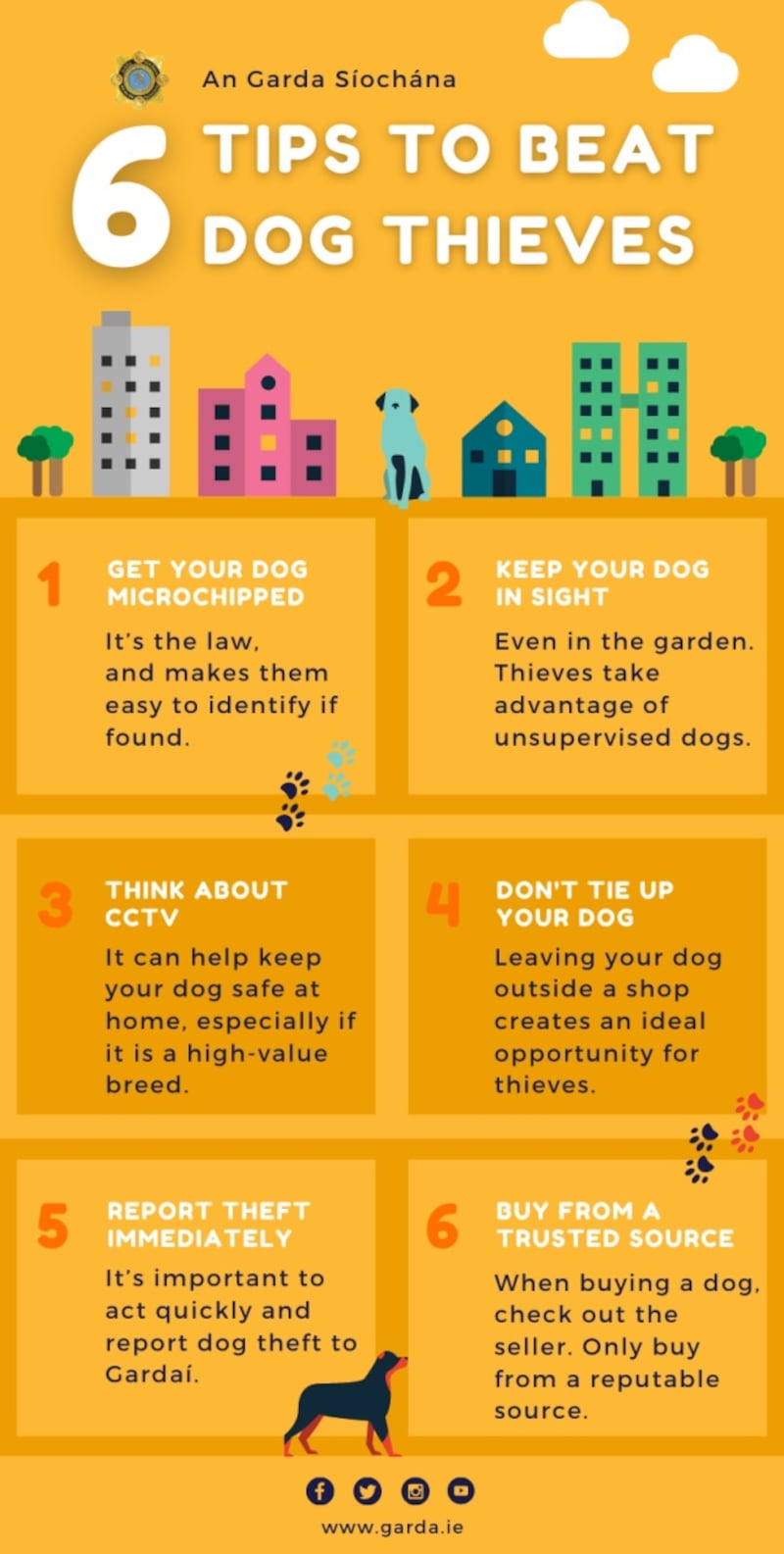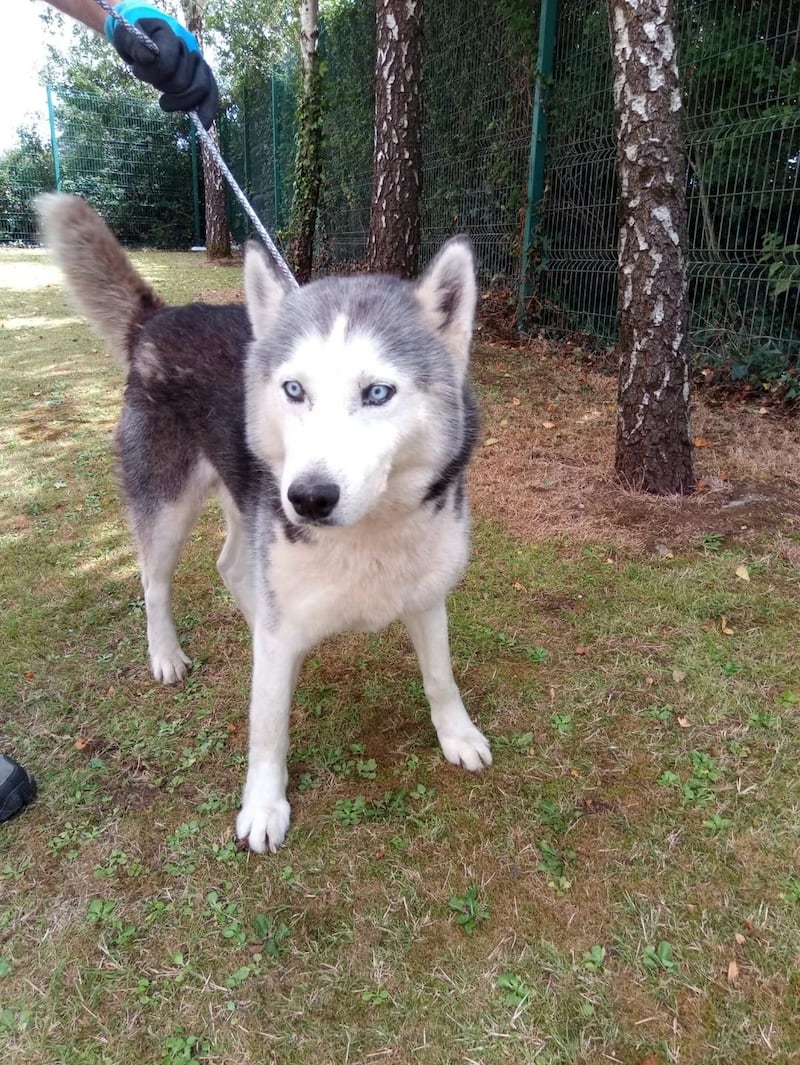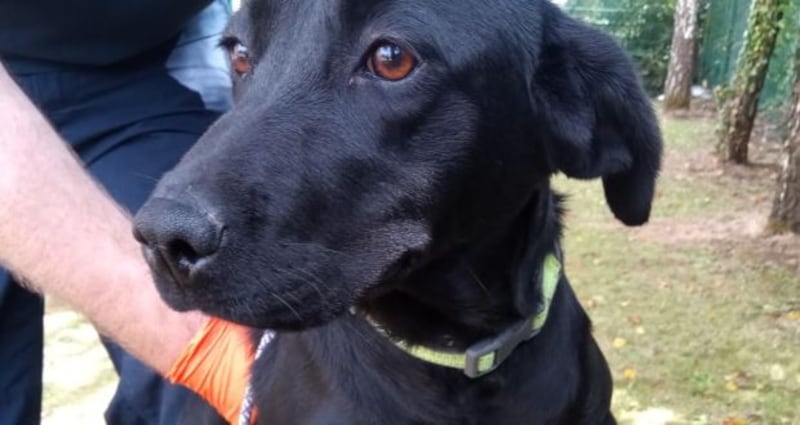When news emerged this week that 10 suspected stolen dogs had been found during a search on a property in Rathkeale, Co Limerick, Orlagh Eichholz's heart soared.
The schoolteacher got a phone call from the gardaí to say at least one of the dogs recovered was a springer spaniel – the same breed as the Eichholz family pet, nine-year-old Molly, who disappeared from the front garden of their home in Co Tipperary on Friday, July 17th.
But Eichholz wasn’t all that surprised when it turned out not to be her dog. A week or so after she went missing, Eichholz got an anonymous tip-off about Molly, who had often accompanied her to school, and as a result, was well-known in the area.
The tip-off led her to someone with knowledge of what happened to her dog. Eichholz has since been has been able to piece together some of Molly’s journey after she was allegedly taken.

Spending 12 hours here and 24 hours there, she had up to eight different owners in the week after she disappeared, Eichholz has learned. The sums of money involved initially were small. “Nobody involved in the first two transactions made more than €100 profit,” she believes.
“The guards have been brilliant. They actually have made a big effort to track her down, but they’re fairly certain that Molly has been sent off in a shipment to the UK,” she says.
“We have it from a source that she has ended up in the UK with many other Irish dogs.”
Eichholz is convinced her dog will be sold on as a pet to an unsuspecting family in the UK. “She was stolen for cash. Quick cash.”
By the time she reaches the UK, Molly’s value will have increased significantly. “On websites in the UK, they’re [asking] £2,000 [€2,216]to £3,000 for a springer spaniel of any age,” she says.
"There is a black market for dogs at present. We are aware of a lot of dogs that are being stolen in the Munster region are being sold on in the UK," says Detective Sergeant Michael Reidy of Newcastle West, who led the investigation into the dogs recovered last weekend in Rathkeale.
Once a dog is taken, it can frequently change hands a number of times before eventually being sent to the UK
The 10 dogs recovered after a search on a house in the town on Saturday were bound for the UK, and were due to be shipped out as early as Bank Holiday Monday, intelligence gathered by the investigating team suggests.
Det Sgt Reidy says there has been “an increase, absolutely, in dog thefts” in the region since lockdown. “We had 14 dogs stolen from a single breeder. And we had up to 50 dogs stolen in the Limerick area alone in the past few weeks. The price of all dogs has gone through the roof in recent times. It’s become a very lucrative industry.”
Criminal elements frequently tap into a network of people who help them to identify suitable dogs, sometimes by responding to an online ad for dogs for sale. “A person might turn up at your door purporting to be interested, and that information is passed on. And suddenly the dog disappears.”
Once a dog is taken, it can frequently change hands a number of times before eventually being sent to the UK, as Eichholz has been told happened to Molly.
One of the dogs recovered in Rathkeale last weekend has since gone back to the breeder concerned. Three or four of the other animals are due to be returned to their owners this weekend. Efforts to find owners for the rest are being hampered by the fact that, although it is a legal requirement, not all of the dogs have up-to-date, registered microchips. “We’re finding a lot of the dogs that we’re recovering are being linked back to the original breeder. So unfortunately the person buying the dog isn’t going online and updating the new registration details,” says Reidy.
It is also the case that sometimes “chip details can be altered and compromised” by more sophisticated elements of the dog-trafficking networks, he suggests.
"Unfortunately at the moment, dogs are a valuable commodity," says Corina Fitzsimons of Dogs Trust. "Nobody could have predicted the demand for dogs during lockdown. It was totally unprecedented."
A cocker spaniel which cost €400 at the beginning of March can now fetch three or four times that on online marketplaces in Ireland. As the value of dogs has risen, inevitably, so has their vulnerability to theft.
Official figures from An Garda Síochána for the first six months of the year do not, however, show "a spike in recorded activity on the theft of dogs during the 1st half of 2020," a statement said last week. The total number of dog theft incidents until July 15th this year was 53. This compared to 70 in 2019, and 60 in 2020. The total number of dogs involved was 120 in the first half of this year; in 2019, it was 205; the previous year, 145.

Nonetheless, online lost and stolen dogs pages are filled with reports of missing dogs. Eight-year-old female cocker spaniel: missing, presumed stolen. Chubba, a four-year-old springer-cross-poodle: missing. Crossbreed Louie: missing, substantial reward offered.
Alongside the plaintive photos of lost and found dogs, are another set of images: chalk marks left on pillars at the gate, or cable ties attached to poles. Posters on the Facebook pages believe these are used to signal to prospective thieves that there is a dog on the property.
“Gardaí are aware of posts showing markings and cable ties that have allegedly been left on gates and boundary walls of properties which identify houses where there is potential to steal dogs. Gardaí would encourage reporting all such incidents or suspicious activity to Gardaí rather than posting on social media,” the Garda statement said.

But Reidy doesn’t believe this kind of marking of properties is a significant factor in dog thefts in Munster. “Based on our intelligence, it’s a bit like the runners thrown over the wires in the old days.” There is no evidence of a link to subsequent dog thefts in the area, he says.
Microchipping
Zara Dunne is one of those who believes her dog, Meg – a neutered, two-year-old springer spaniel – was stolen. Meg disappeared on August bank holiday Monday from near the family home in Baker's Bridge, Co Cavan. "She'd been around all day. And then at about 4pm, she literally just vanished. We asked neighbours and reported it to the guards, the local SPCA, the dog warden, and the vets, tried to get it out on Facebook.
“It’s the not knowing. If you knew someone had her and she’s safe obviously, that would be devastating, but you’d know she was safe.”

She is worried that “when they realise dogs aren’t suitable for breeding, they’re using them for dog bait, for fights.”
Meg has a microchip and is registered, which means Dunne has a better chance of recovering her if she’s found.
“What we’re asking people to do is to microchip their dogs,” says Fitzsimons. This does not mean “you can trace your dog if they’re taken. There’s no GPS. But it is the best permanent way of being able to identify your dog if they are found.” Owners also need to ensure the microchip is registered and they are listed as the owner in one of the national database.
Vet Finbarr Heslin runs one of those databases, Fido.ie. “There’s no doubt [dog theft] is happening. I just don’t think there’s a plague of it. People will put a flag on the system saying a dog is missing, and they’ll forget to turn the flag off when the dog turns up.”
What is definitely happening is that the value of dogs has soared. In June, Fido.ie website had a jump of 57 per cent in the number of new dog registrations compared to the previous year. At his veterinary practice, “I don’t remember ever seeing the number of new dogs that we’ve seen in the last three months.”
Ireland has one of the most tightly regulated regimes on dog ownership in Europe, he says, making it very difficult for stolen dogs to be sold on here. "If you arrive into me with a new pup, I'll scan it, and we'll get onto the database to see if there's a previous owner. If there is, we have a set of standard operating procedures. We get onto the previous owner, whether they're in Meath or in the Netherlands or France. And that's usually where they'll go, no, that dog was stolen."
Since last February, a dog can’t be advertised for sale or transfer online without it being properly registered and having a microchip number. Nefarious dealers can find ways around this – by using the same chip number for multiple dogs, for example – but it is another safeguard.
However, in the UK, where there are 14 different dog registration databases, dogs can more easily fall through the cracks. Many dogs stolen here end up on the UK market. “At European level, pups are now the third most-trafficked entity. After drugs, it’s guns, and then pups. The legal dog trade in Europe is worth €13 billion a year,” says Heslin.
There’s much less risk involved in trafficking pups. “If you rock up at Dublin port with a boot full of puppies, worst case scenario, they might be taken off you. But you’re not going to end up in court. If you do the same with a big bag of drugs or a human in your car, you’re in trouble,” says Heslin.
‘Inanimate object’
Fianna Fáil TD for Clare Cathal Crowe wants the law changed so that pups can't be advertised for sale on social media sites like Instagram or Facebook or online marketplaces like Done Deal or Adverts. Dogs who pass through Irish ports should all have their microchips scanned, he says. And he would like to see a separate category created for dog theft in legislation. "At the moment, [a stolen dog] is treated like an inanimate object."
Fear for the safety of their dogs is causing huge concern among his constituents. “In the past month, I’ve had more than 15 or 16 people onto my office about it.” A handful had dogs stolen, the rest were just terrified by what they’d read online about the “epidemic” of dognapping.
Cormac Connolly did not assume the worst when his beloved 12-year-old shi tzu, Jasper, went wandering away from home in Monaghan during the night of Monday July 27th. But "when I got up the next morning at 8.30, he still hadn't come back. I thought maybe he'd gone chasing a bitch that was in season."
But he checked with the neighbours and there was no sign of Jasper. “Then I started looking for a body. After two days, I resigned myself to the fact that he wasn’t coming back.”
The idea that Jasper might have been stolen hadn't occurred to him, but his daughter put a post up on Facebook. Less than a week later, "a woman called Tess McLaughlin shared a photograph of a dog that looked like him in Letterkenny, " 112km from home. He had been wandering around her estate.
Even when Connolly saw the photos, he wasn’t convinced. “I said it looks like him, but how would he have got to Letterkenny?”
It was only when McLaughlin took the dog to a vet in Derry – the only one open on the August Bank Holiday – to get scanned that he really believed it was Jasper. "I never thought he would have been dognapped. But there's no way he could get from Monaghan to Donegal unless somebody put him in a vehicle."
How does he feel now he has Jasper back? “You can’t describe that feeling. Just unfettered relief.”
Meanwhile, Eichholz and Dunne are still anxiously waiting for news of their dogs. “She sleeps in a little bed beside the radiator. She’s next-level spoilt,” says Eichholz. “And now to think of her thrown in a cage with loads of other dogs is just awful.”









